You don’t always get what you deserve. George Gomez deserves to be a household name. He’s a certifiable legend, responsible for tens of millions of dollars in coin-drops over the last forty years. This is a man put on this Earth to entertain. A game maker. A toy maker. A pinball maker. He created Spy Hunter AND Monster Bash, and between that he made darts you fill with water, which I totally would have used if I had been alive when they came out. And I’d probably aimed for people’s eyes with them, because that’s how I roll. Anyway, I got to talk to George, who currently is Executive Vice President and Chief Creative Officer at Stern, the current leaders in pinball, because I am that lucky. We discussed his career, his projects, and general thoughts on the nature of game and pinball design.
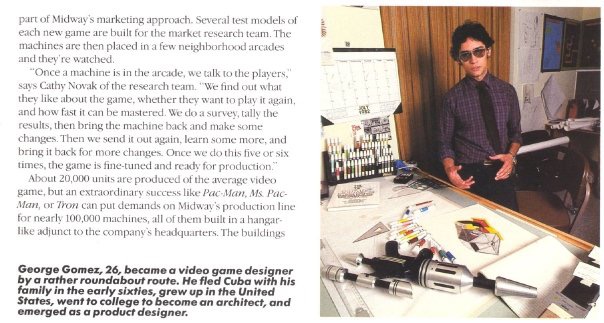
Cathy: I feel that you’re maybe the most unsung legend of the industry. You did arguably the most iconic licensed game of the Golden Age of Arcades in Tron. You created Spy Hunter. You transitioned to pinball and created the most beautiful swan song for Williams in Monster Bash. You are still going strong today, leading Stern. Yet, you’re largely unknown to even hardcore gamers. So, how does the nickname “The Low Key Legend” sound to you?
George Gomez: Wow, well “Legend” anywhere near my name seems like you’re talking about somebody else. I’ve been really fortunate and I’ve designed coin-op vids, toys, novelty games, pinball, and even Xbox & PlayStation games. I’m just happy to have been able to do what I’ve wanted to do at a variety of different companies, with super talented people all around me.
Cathy: Humble too. I know what that’s like. I, myself, have been admired for my humility. Ahem. My readers are genuinely fascinated by the “road not traveled” with pinball (and so am I). Legends like that Star Trek: The Next Generation was designed with the Steven Seagal movie Under Siege in mind, or Safe Cracker was to be Monopoly. Those kind of things. With that in mind, rumor has it that a Mortal Kombat table was on the drawing board and possibly that’s what Monster Bash WAS to be. Any truth to that? Also heard that Game of Thrones at Stern was maybe originally Harry Potter?
George: Well, speaking of legends some of those fall into the category of urban legend. On Star Trek, what I recall hearing is that before Star Trek came up as an option, the license he was pushing for was Under Siege. He had been talking about a battleship that took up the whole side of the playfield but I don’t think that got very far. There was never any Game of Thrones relationship to Harry Potter other than we would have loved to do Harry Potter.
On Mortal Kombat, there is some truth to that; except it would have taken the place of my second game Johnny Mnemonic, not Monster Bash. At the time I was just starting out at Williams and I asked Ed Boon if he would mind and he said, he had no issues with that. I had a vision that I could do justice to the game, work thru a series of challenge ladders and face an Uber Boss. Steve Ritchie got wind of it and said he had wanted to do it before I asked and that along with the marketing guys saying that they felt that the 2 audiences didn’t really cross over, pretty much killed it. That said Johnny Mnemonic was a from scratch design, none of the stuff I was working on for MK transferred over.
Cathy: Can you name any “Table X” was originally going to be based on something entirely different stories?
George: The most resent example of that is pretty well known; when we saw Keith Elwin’s “Archer” home brew, we were pretty impressed with his design and hired him. An evolution of the Archer design became Iron Maiden. Amongst my own games; I wanted to use the kitschy “Monster Mash” song from the 60’s as the theme for Monster Bash, but when the owner of the rights to the song wanted too much money, I made “Mash” into “Bash” and never looked back. The reality is that we didn’t miss it.
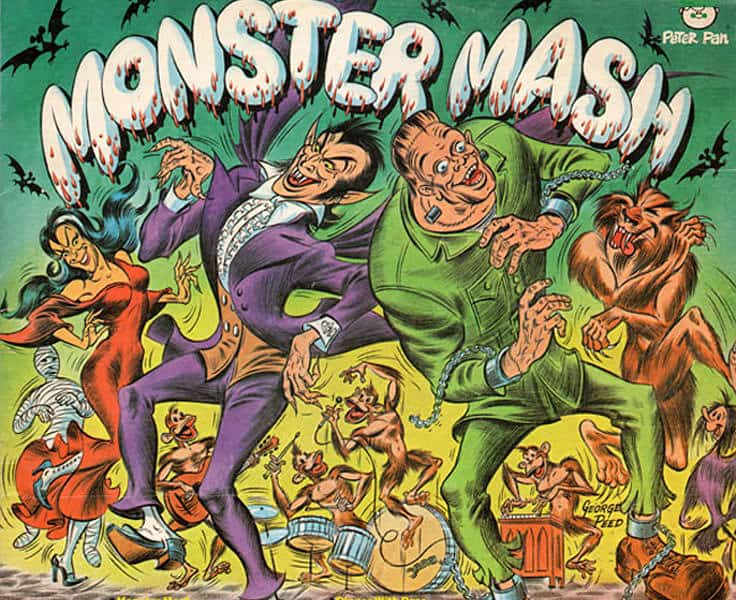
Cathy: Along the same lines, I asked my readers if they had any questions, and the #1 question by far was “do you design tables with the license in mind or do you have a series of concepts that you then tailor for licenses?”
George: All modern era game designs are conceptualized with and driven by the themes. Up until the 80’s it used to be that the designer created a game and the artist dressed it. I’ve never worked that way on any product. I believe that integrating the theme is pivotal, because the idea is to immerse the player in the world of the theme’s fiction and everything in the game should do that.
Cathy: I think the one thing that keeps Monster Bash from being maybe the perfect table is the top-heavy scoring balance. That Monsters of Rock is so necessary to a high score that any game you don’t get it, no matter how well played, is a scrub. I’ve noticed every table you’ve done since then has really fine-tuned scoring above any other design signature. Is that the one “take back” you’d do if you could?
George: So the thing we were trying to achieve with Bash was to create a simple game that you could play without having to dedicate your life to it. I wanted it to be fun and light. My partner on the game, Lyman Sheats, really balanced the score and we both worked on trying to make the progression thru the game a very novice friendly achievable thing. I’m fortunate that I have a few games in my portfolio that are considered significant to the genre. Certainly Monster Bash and Lord of the Rings are in that group. I think Deadpool will be in that group one day. I have to say that while the world tends to be very “designer” centric, in every game, the people that have been on my teams have made significant and impactful contributions to the games. I think that a good designer leads by allowing his teams to express their creativity and contribute. The magic is to edit and keep the work focused. The game needs to feel integrated and cohesive even though it’s the work and creativity of many people. Every one of my teams thru the years has elevated my work and any designer that thinks it’s all about his vision, is delusional.

Cathy: This isn’t a question so much as a threat. It’s 2021 and there’s no pinball machine based on the iconic game show Price is Right. Next year is its 50th Anniversary and George, I know how to cut a brake line. Just sayin’.
George: (Laughs) Bring it!
Cathy: (nods, puts down wire cutters) Ahem. Was there any license where you wanted to do specific stuff with and the IP owners put the screws to you, said “no, you can’t do that?”
George: Yeah, every licensed game faces this challenge. Developing a game with a license is one of the most difficult things we do. One of the licensors prime directives is to assure a consistent presentation of the brand to the world. The licensor has guidelines, usually developed by the creators of the brand to preserve the character of the brand. When I was working on “Batman: The Dark Knight”, I submitted the script of game speech for approval and a bunch of stuff that I felt was harmless was denied. I decided to push back and the reply I got was: “Batman would never say that.” (Shrug) Be assured that there is someone in the world, that knows exactly what Batman would or wouldn’t say.
Cathy: Apparently he does say the F-word now. They’re making a big deal of that with the Zack Snyder Justice League cut. See, you came around ten years too late. Do you have a dream license to work with that you’ve never been able to get?
George: There are a few that are elusive, some that I can’t talk about because we’re still chasing them. After the MK concept was killed I wanted to do Aliens, based on the second film. At the time there was an awesome toy line that had a lot “new” Aliens and they were molded with a lot of colored translucent plastics and I thought that we could do something similar and introduce some cool illumination into the Aliens to create features on the playfield. I was also fascinated by the final scene in the film, where all hell broke loose and the facility is going to self-destruct and Ripley has to get out with the little girl and the Alien Queen is in the way and the female computer voice is counting it down. A lot of potential game play tension in that scene. But it was several years after the film and the company felt it wasn’t relevant. The management guys pushed me toward Johnny Mnemonic. I was a fan of the short story and of William Gibson’s books, so I took it. I ended up doing my own take on the countdown tension in JM with the Powerdown Final Mode. It’s basically a spinning plates game, where you need to stay alive by maintain areas of the playfield “energized” and time is running out and the computer voice is counting it down. It begins slowly and builds a lot of tension. I’m actually surprised you didn’t beat me up about score balancing in JM, that’s the one I always get hassled about.
Cathy: You know, I haven’t played it extensively. I’m pretty limited to either tables we really have or ones that have had an official digital release. Oscar has and says it’s actually one of THE underrated tables of the entire 90s. But, he admits it’s not desirable from a collecting standpoint because it wears the albatross of being a table based on, well, Johnny Mnemonic. When you finally saw the movie, did you consider faking a heart attack to get out of the assignment? I’ve heard that’s a thing pinball makers do.
George: (Laughs) I should have faked a heart attack. The truth is that the Johnny Mnemonic fiction is a little.. out there. If you didn’t know the short story, it’s hard to convey. Think of the games released around JM; Theater of Magic was simple and the theme is instantly obvious. Sega Pinball had the green Batman game with Val Kilmer, also fairly obvious. Neil Nicastro, in those days the CEO, approached me when he heard that I wanted to do Aliens and told me that Sony was going to spend 20 million advertising the film and Keanu Reeves was coming off a big hit with Speed. It was my second pinball design, I wasn’t used to the CEO making suggestions, so I did it. As I said earlier, I knew the story and it seemed cool and edgy in light of the rise of the “internet”. To put this in context, in those days, Williams Electronics had no external facing email and few if any of us had a home internet connection. So a film that presented a visual construct for this thing called “the internet”, was conceptually, on the cutting edge. I didn’t get a movie screening until it was too late. I did call back to Chicago and try to get them to pull the plug 20 minutes after seeing the film. (Cathy would like to note at this point my Dad is laughing so hard I’m afraid HE might be having a heart attack) I should have known something was up, because they made us sign something that said we couldn’t change our minds about anything if they screened it for us. I’ve heard that William Gibson owns the game and given how much I’ve enjoyed his books over the years, I’m happy about that.
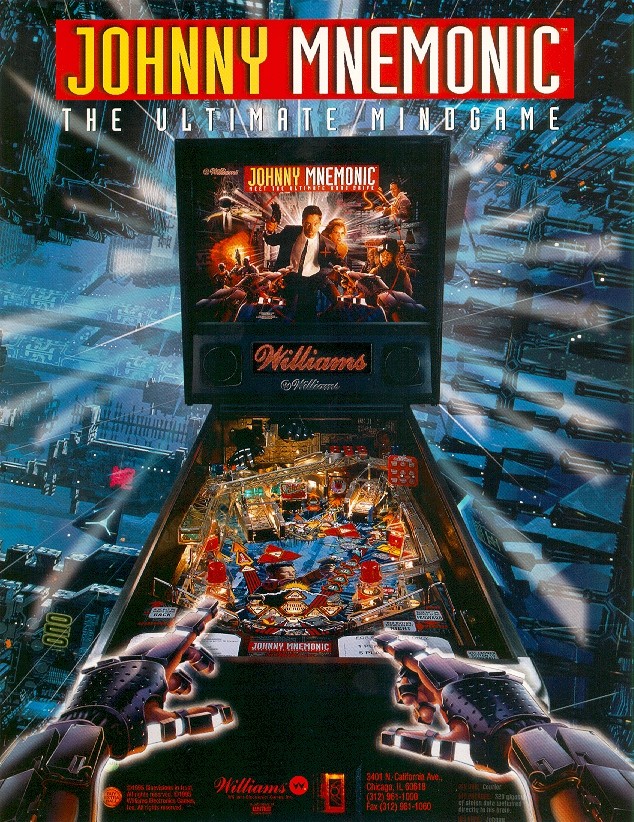
Cathy: Of course he owns it. He wanted SOMETHING good that came out it. But you never really know how these things will turn out. I always tell indie developers to expect their plans to be compromised. You have such a story, with the Corvette table. Slated to be a SuperPin, but then Midway decided to cancel the line. Popadiuk thought that helped World Cup Soccer. Is Corvette better for being a standard body? Were their any major changes as a result?
George: Yes, well in the case of Corvette, I’m really glad that I had to make it a narrow body. I didn’t know then but in my opinion, wide-bodies are inherently flawed. The kinetics are compromised. Shots outside the standard 20.25“ width are weak shots, given the available stroke on standard flippers. The stroke of a flipper is approx. 50 degrees. You can rotate the entire flipper to help that but then you compromise the shots in the center of the playfield. One constraint is that the flipper is a lever and it accelerates thru its arc of travel as a function of the force applied by the solenoid. The position of the ball on the flipper, combined with its weight and velocity when you engage the solenoid, is what determines the direction of the shot. All of the widebodies I’ve played feel really soft on those outside shots and fairly unsatisfying. The reason the older ones from the 70’s and before feel fine, is because the nature of those old games was slower and the ball was what we now call “floaty”. Neil Falconer who was a software developer at the earliest versions of our company, used to say: “when the company you work at starts talking about making wide bodies, its time to dust off the resume because they are a recipe for disaster”. Of course in the virtual world its not an issue, playfields could be enormous.
Cathy: There was going to be a Spy Hunter movie starring the Rock that never got off the ground. Gaming is full of those stories, and you have at least that one. Are there any other dangled carrots that never came to pass?
George: In the last dying days at Midway I pitched a new Spy Hunter. It was to be on the Xbox 360 and PS3- I’ll send you the sizzle video that we made as part of the pitch. I think that pitch is still relevant today. Remember, that I had nothing to do with the resurrected Spy Hunters that the company made for the consoles in the 2000’s and I really felt a sense of loss that I wasn’t involved. So I called my pitch Spy Hunter Renaissance and I wanted to take it in new directions. I wanted to add jump jets and rotate the wheels such that they made the car hover a few feet off the ground. This was so that I could introduce a new driving dynamic that had the physics of a hover vehicle in addition to the physics of the car. I also created story line that the car had a very dangerous power source and for that reason it was a closely guarded secret known only to the designers of the car and select people in government. As the pilot of the car (the pilots were nicknamed “Spy Hunters”) even you were unaware of what it was. As the story evolved and you completed missions, you began to discover what in fact the power source was. In the end you faced an enemy threat so great that you had to sacrifice your self by turning the car itself into a destructive weapon to destroy the enemy threat. Oh well, the stuff of my dreams or maybe I should say my nightmares.

Cathy: Legend has it you had no knowledge of Lord of the Rings when you started development of the table for it. My friend and Pinball Chick writer Eala says I’m supposed to yell “IT’S CALLED THE F—ING BALROG” at you. But I won’t do that. Instead, I’ll ask how much of a license’s “lore” do you assimilate while making the table for it, and did you ever become a fan of a property you did the table for?
George: I think its key that design teams relate to the things they work on. The passion for the theme clearly impacts the work. In my current role, I try very hard to make that happen with my studio. On “no knowledge of LOTR”, that’s an exaggeration, I read the Hobbit in college and I liked it but I had not read the other books. Your friend is referring to a story I’ve told many times, where the other guys on the team were completely geeked out on the fiction and every time I mispronounced something they would roll their eyes at me. When I met with the team one day to pitch changing what was originally a cave troll into the Balrog, I referred to the Balrog as the “big red fire guy” and Keith Johnson and Chris Granner, shouted in dismay “Dude, that’s the Balrog!!!!”
Cathy: We’re focused on digital pinball here at The Pinball Chick, and we’re big advocates for doing digital recreations of real tables. Stern did have a deal with Farsight, but nothing has come out recently. Have we seen the end of you guys licensing your tables for those who can’t afford $6,000+ per table?
George: No, not at all. We are actually so interested in that business that we are taking a step back and strategizing how to make a bigger impact in that area. Stay tuned, you’re going to be pleasantly surprised. But you know that really cool things take time, it’s not around the corner.
Cathy: You’ve made some truly incredible pins, so I want to ask you, George Gomez: how do YOU define “flow” in pinball?
George: To me, flow is not strictly about a series of smooth shots, although clearly they are the most obvious component of it. There is an intensity that occurs when one shot sets up another shot or a possible transition in the midst of accomplishing a greater game goal like a hurry up or a scoring frenzy. The feedback the game gives you with sounds as you complete consecutive shots is vital to enhancing that feeling. Its about getting the player so intensely focused on making the subsequent shot to continue the combination, that it becomes all consuming.
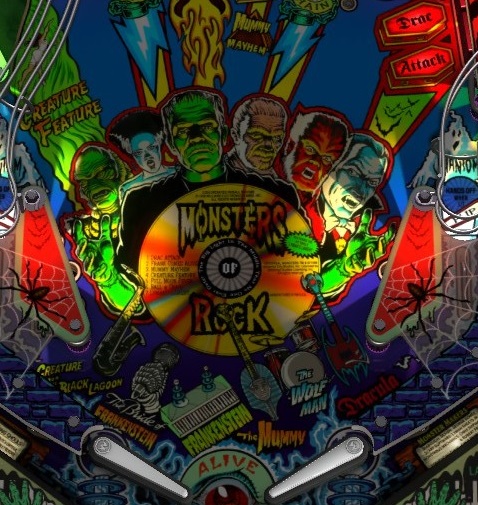
Cathy: Most of my readers are actually in game design themselves, and I can tell you that many of your games come-up in discussions of what inspired our current generation of indie game designers. Especially those who do white-knuckle action stuff. Even your hidden gem type stuff like Satan’s Hollow still comes up in discussions. What is one thing about making a great arcade action game you know NOW that you wish you had known back then?
George: Iterate, iterate, iterate. Try stuff as fast as you can, it’s the only way you can get to fun. You can’t just stare at your screen, you have to make stuff. Whether it’s code or art or mechanism or whatever. Making things informs you in ways that you can’t imagine; just thinking about a problem wont solve it. You make it, you play it, it sucks, you do it again and again and again.
Cathy: Have you ever gotten the itch to go back and develop one more really great arcade-style action game before you retire?
George: Yes! I actually think about it a lot because ideas come to me and I want to try them. A fun play mechanic is timeless. The Angry Birds frenzy years back re-enforced this in my mind. In the late 70’s early 80’s the vid game companies were truly innovating. Think about the diversity in the play mechanics of Space Invaders, Pac Man, Missile Command, Defender, Robotron, Centipede, etc. We don’t have anywhere near that diversity in creative play in today’s games. Too many games fall into genres where the core mechanic is predetermined; drivers, shooters, RPGs, fighters, sports, such that the points of difference become presentation and storytelling. Don’t get me wrong, I still own and buy every console and I play when I can and there is plenty of amazing entertainment still in games. My commentary is strictly a personal introspection about the significance of a solid core play mechanic. What is fun and how do you make it?
Cathy: You mentioned Angry Birds. That’s one of two “modern” properties (along with Geometry Wars) that I thought could have been massive in arcades in the 80s. Now, I want to flip that: is there any game you worked on during the Golden Age whose time had yet come but would have been a huge hit later down the road?
George: Uhm, I think I worked inside of existing play mechanics and enhanced them, I don’t think I invented a new mechanic. Spy Hunter is a driving game and I added the notion of a car with weapons and you get music when you have weapons in an attempt to make the game feel cinematic. I was inspired by the common scene in James Bond movies where he is faced with overwhelming odds and you know there is going to be a major confrontation (the Little Nellie helicopter fight in You Only Live Twice or the final underwater fight in Thunderball) and they bring up the Bond theme and it feels just epic. Things like the weapons truck are a great example of figuring something out by doing. When we brought up the game, the car just “grew” weapons and ammo in video game fashion based on checkpoints. This felt wrong to me, because cars don’t just grow weapons and ammo just because you drove further down the road. I looked at Knight Rider and said we need a truck that he drives into. Tom Leon, my partner on the game, hated the idea of the truck. I talked him into putting it in and once we had it in, we figured out that calling up the truck and having to avoid getting killed and negotiating the car to line up with the truck and trying to stay in the fight all the while, was a big strategy thing. Things happen when you make stuff. So the reality is that I didn’t invent the core mechanic of the game; it’s a driving game, I just created an extension of the genre.
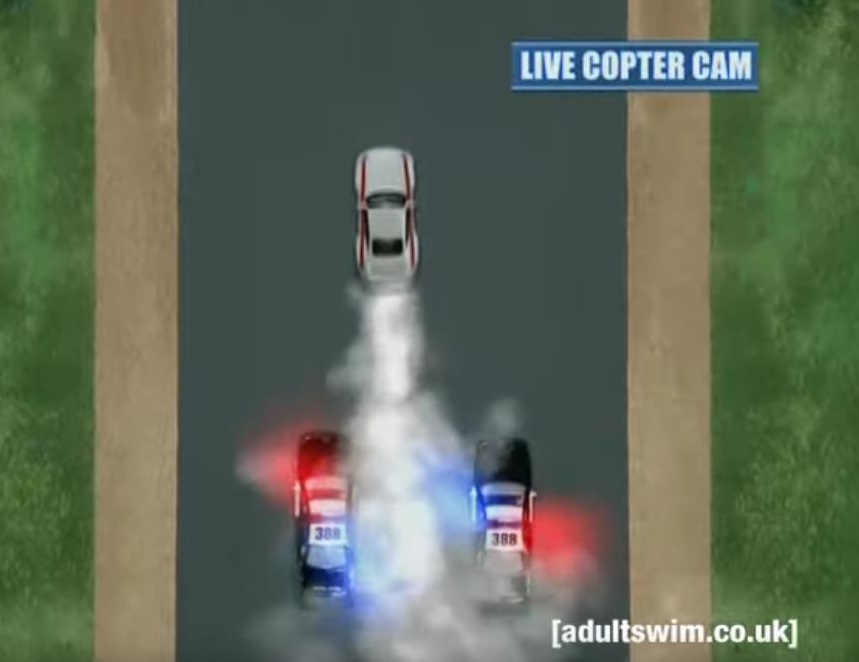
Cathy: I have to ask about probably the most famous Golden Age licensed game: Tron. How did you get that assignment? Because I’m sure everyone at the time was chomping at the bit to get it!
George: Tom Nieman was Bally Midway’s Licensing guy and he told us that Disney was going to make a movie about video games, that was going to feature state of the art computer graphics and that they were looking for a video game partner. At the time Midway was the largest manufacturer of coin operated video games in North America. It had achieved that partially by establishing itself with the Japanese game companies as the manufacturing and sales agent of their products in the Americas and Western Europe. It had relationships with Namco, Taito, etc. I’m sure you are aware of this but some of your audience may not know it. It also had 2 captive R&D groups that developed products not licensed from Japan. Those groups were Dave Nutting and Assoc.(GORF, Wizard of WOR, etc.) in Arlington Heights, IL and Arcade Engineering(Omega Race, Solar Fox, etc.) in Ft. Lauderdale, FL. Bill Adams and I worked for the in house engineering group and at the time while Bill was allowed to make and pitch game ideas; I was attached to a group that mostly focused on making the licensed designs and the designs from Dave Nutting and Arcade Engineering production ready. Most of what we got from the external groups were very rough working prototypes.
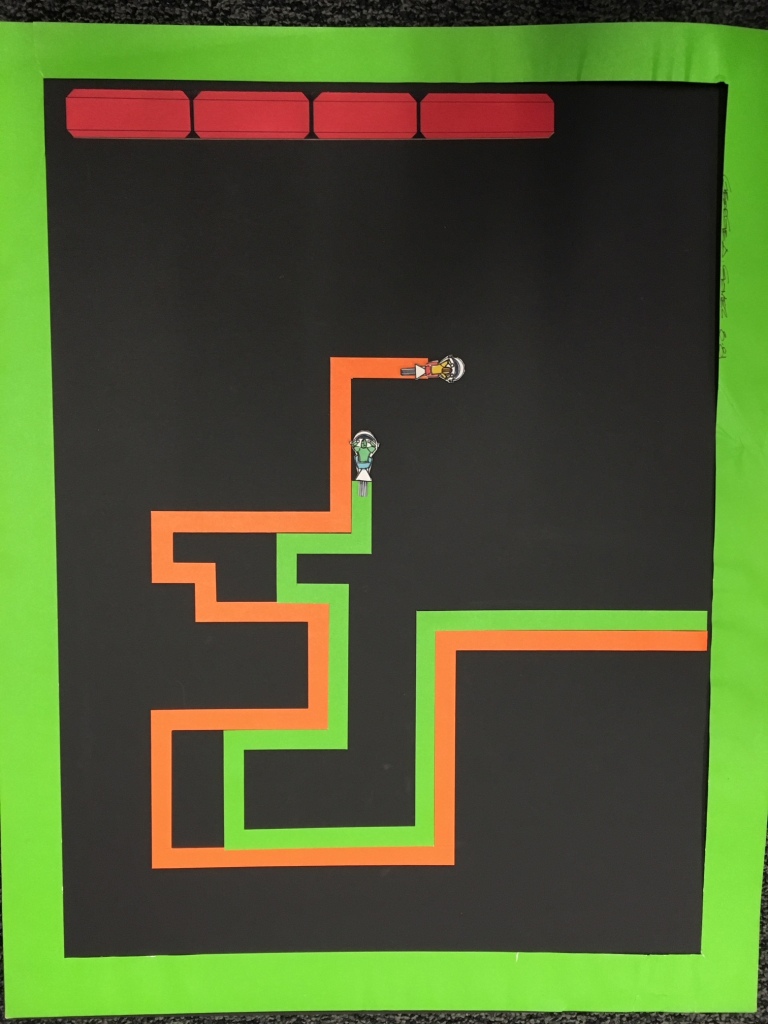
The company had decided to solicit designs for TRON from DNA and Arcade Engineering and then they would select which direction to go in. Bill and I begged to be allowed to pitch a concept. John Pasierb and Dr. Marty Keane were running development at the time for Midway and they allowed us to pitch. I don’t think anyone believed that we would actually land the opportunity. Three of us; Bill Adams, a young electronics design genius called Attish Ghosh and I got the script for the film from Disney and started talking about what to do with the game. Attish had designed the MCR2 hardware set (first used to power Satan’s Hollow). The company and Disney’s plan was to hold a nationwide TRON competition at the Aladdin’s Castle Arcade chain, which was owned by Bally. The competition would launch a few months before the film; leading up to a play-off to be held at Madison Square Garden in NYC, then the winners would all go to the premiere of the film. So there was a lot of pressure to deliver the game in time, not just for manufacturing but to enable the tournament and all of the associated PR events. Bill and Attish decided that using the MCR2 Satan’s Hollow hardware would be a huge advantage, because we could start developing right away. We worked like crazy in the weeks leading up to the presentation of ideas and when we showed up I had these big poster boards that outlined what we thought would be the waves in the game and Bill had stuff moving on screen and I had a mockup of the cabinet with the glowing grip and some very rough art concepts. I think Dave’s group was focused on building the game on what was a bleeding edge hardware system using the first true 3d vector graphics that I had ever seen. The reality was that had we gone in that direction, it wouldn’t have been done in time. I think Arcade wasn’t that interested in the project, so I don’t recall what they pitched. We were the only ones that had actual stuff in the pitch and I think management decided that we really wanted to do it, so we got our shot.

Bill was very intelligent about how we attacked it; he gave each wave to a different programmer and he focused on bringing everything together and tuning the game. Famously the discs wave consumed all of the resources of the system early on and so we abandoned it to be come the sequel. That game went thru its own iteration in that we had to invent an aiming system and many other techniques. I’m most proud of having come up with the notion of running the cursor around the stripes on the perimeter of the virtual arena and being able to move it up and down to select the stripes. That game was programmed by Bob Dinnerman, who was a young engineer hired around the time that the first game was shipping. So after many months of craziness, we made it, we went to NY, watched the tournament, went to lunch at Tavern on Green with the movie stars and then saw the movie premiere.
Cathy: This is one of my longstanding “personal curiosity” things. I’m a fan of Satan’s Hollow. But, it’s not a huge hit, and my theory is you released a game with the word SATAN in it right in the middle of the Satanic Panic. I’m a godless Californian, so I have to ask, were there any arcade operators or chains that put up a stink over the name?
George: Satan’s Hollow was designed and programmed by Bill Adams. Bill is the guy that moved me into actual game design. He had a very clear vision for the game, a very evil villain boss, building the bridge, the moat, a castle, birds, etc. The evil boss became Satan because at the time there were lots of films featuring Satan; the Exorcist, The Omen, the Damian series, etc. Again we used a common technique of listing 2 columns of words and matching to pick the name. My biggest contribution to the game was drawing the flight patterns of the birds. At the time there was some push back from what the sales guys referred to as the “Bible Belt states; they just would not have games that showed or even had Satan in the name, even if he was the villain.
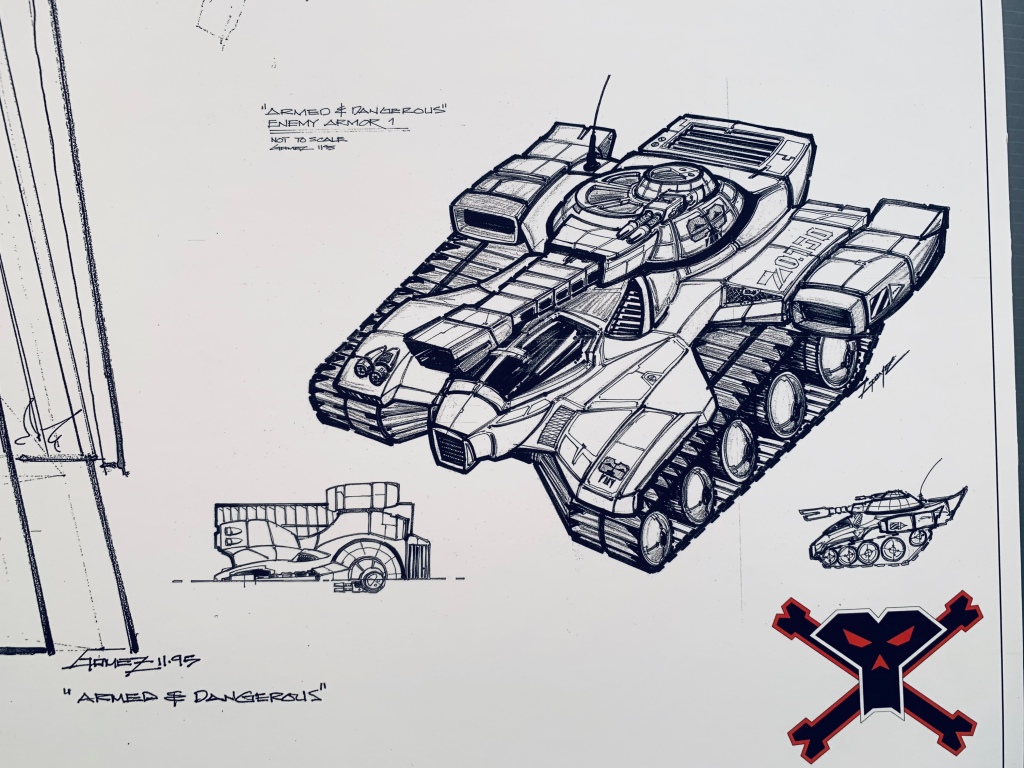
Cathy: Finally, pinball is probably the most popular it has been since the mid 90s, but stuff like Stern’s output or even Jersey Jack are tables being made by the same designers who thrived in the 80s and 90s. Steve Ritchie: still making pins. You: still making pins. Pat Lawlor? Still making pins. Hell, American Pinball found the storage locker Joe Balcer had been left in, dusted him off, gave him a hot meal, and he just made the Hot Wheels machine for them. I must confess that I do worry the art of real table design might be lost when your generation takes their final bow. How is the art form going to make it through the next few decades when the industry still relies so heavily on these legends?
George: I think I’m doing my part to ensure a bright future. I hired Keith Elwin and his contribution has been very impactful, high energy, new ideas, great attitude. I think he still cant believe he’s getting paid to make games. I have 2 more up and coming designers in my studio right now that you haven’t heard from yet but in the next few years you will. I have a great balance of new and experienced talent in my studio in every discipline; artists, animators, designers, ME’s, software devs; you name it. It’s a great dynamic, there is a tremendous buzz and energy in that place, it’s probably what I miss most since Covid.


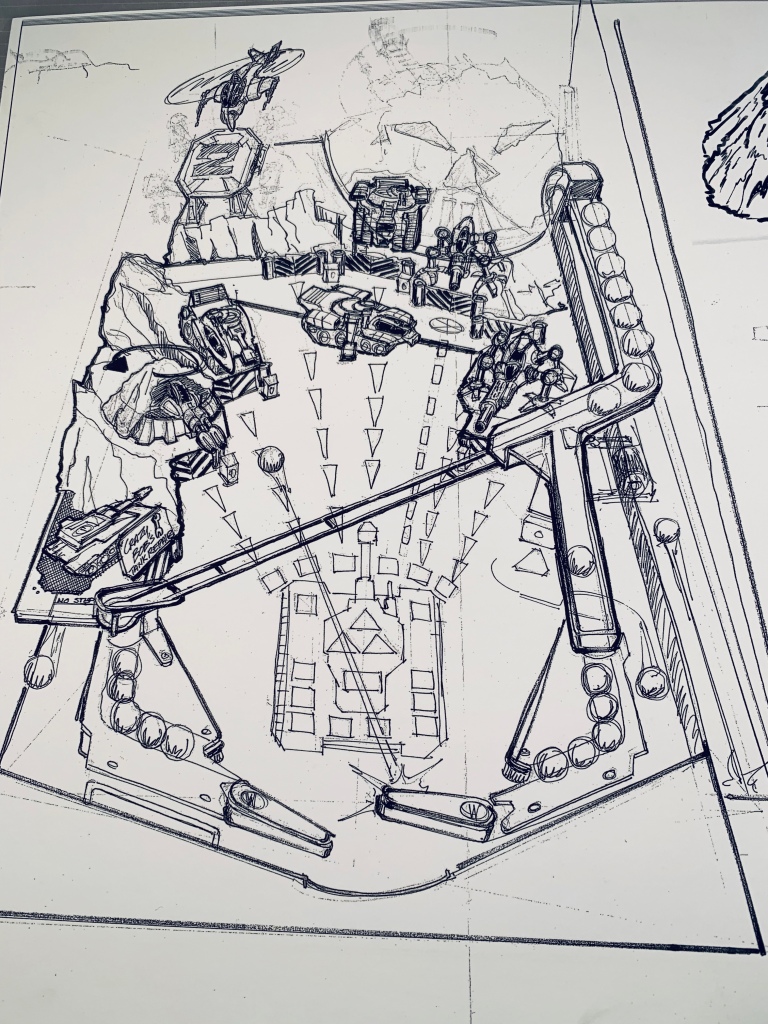
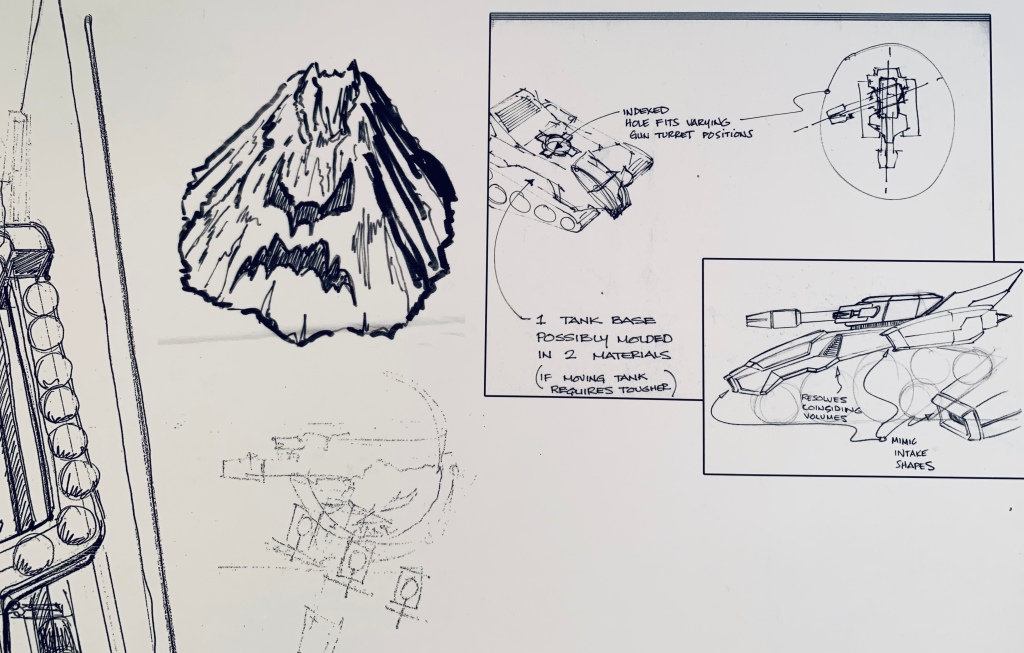

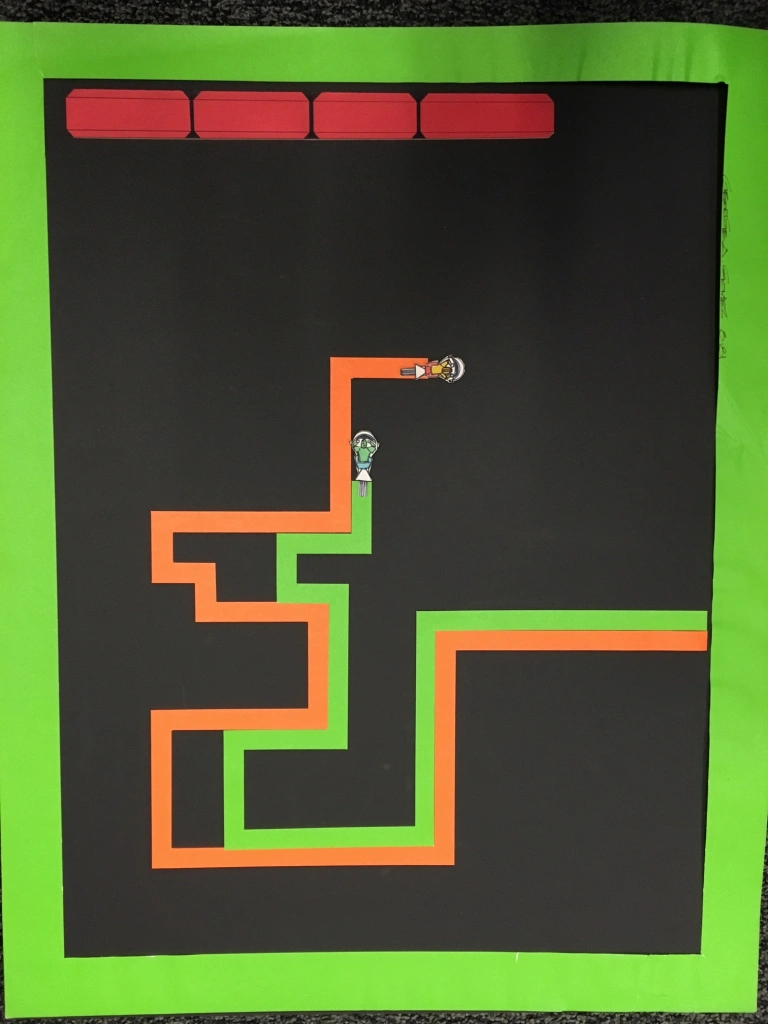

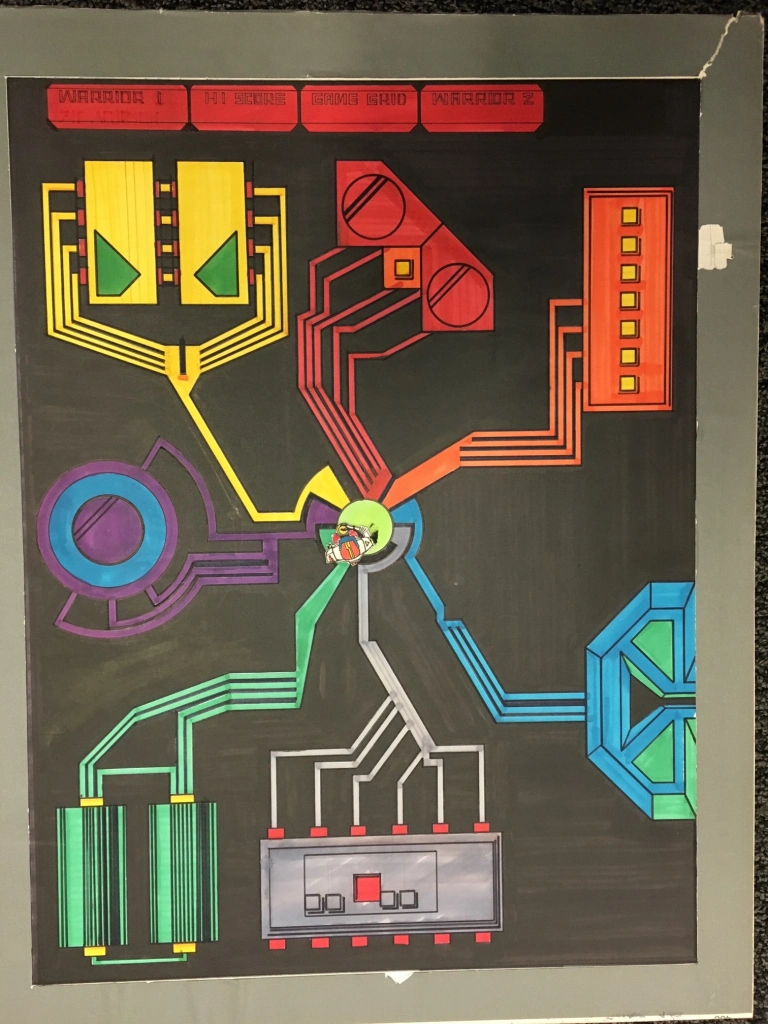
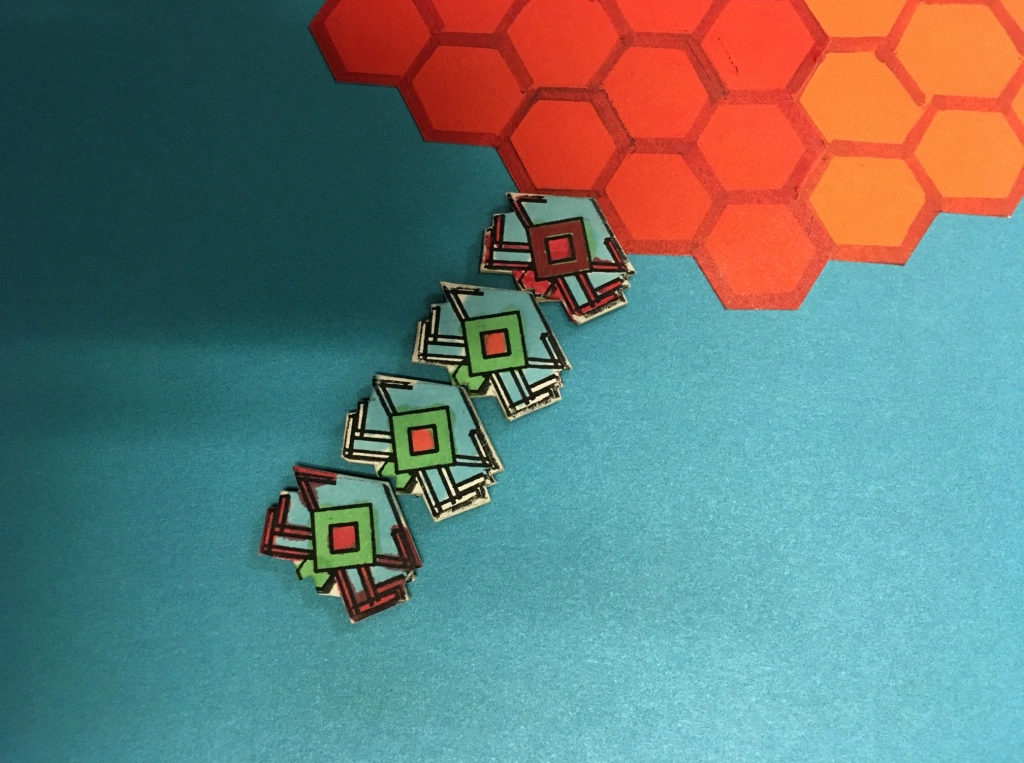

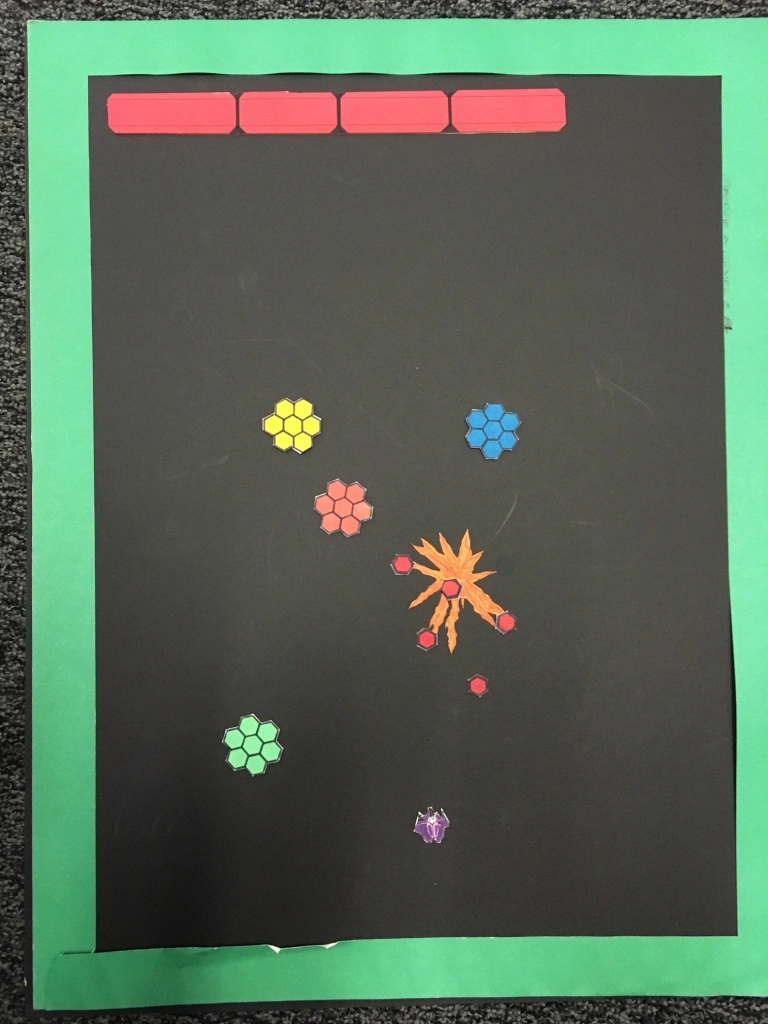

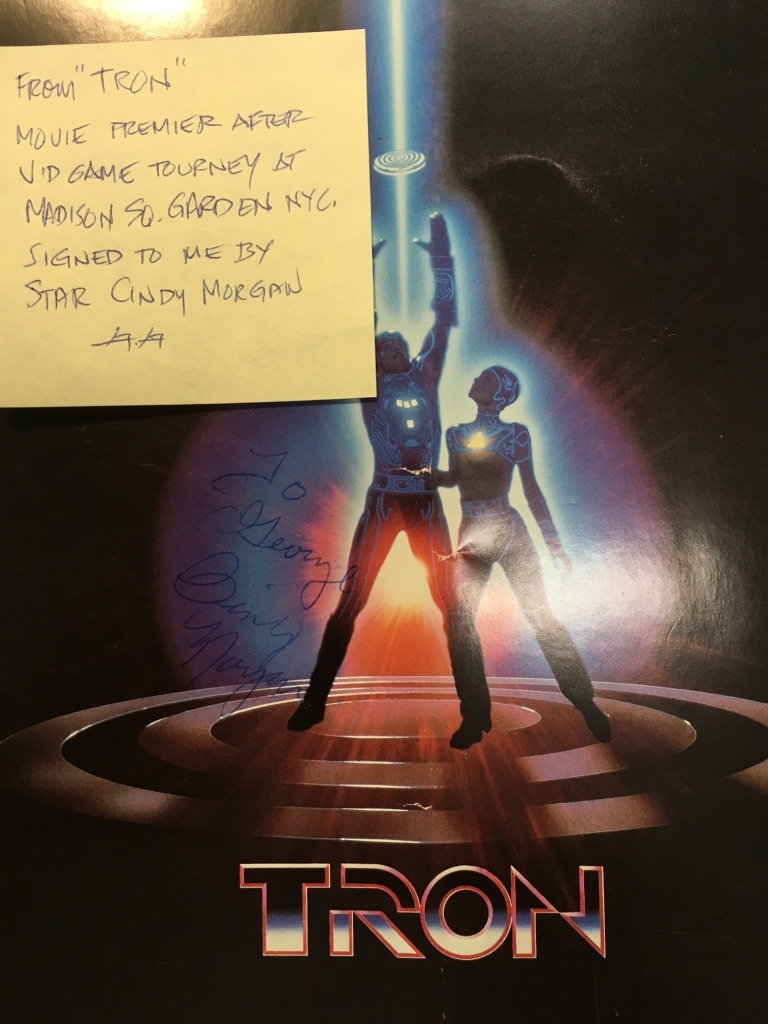
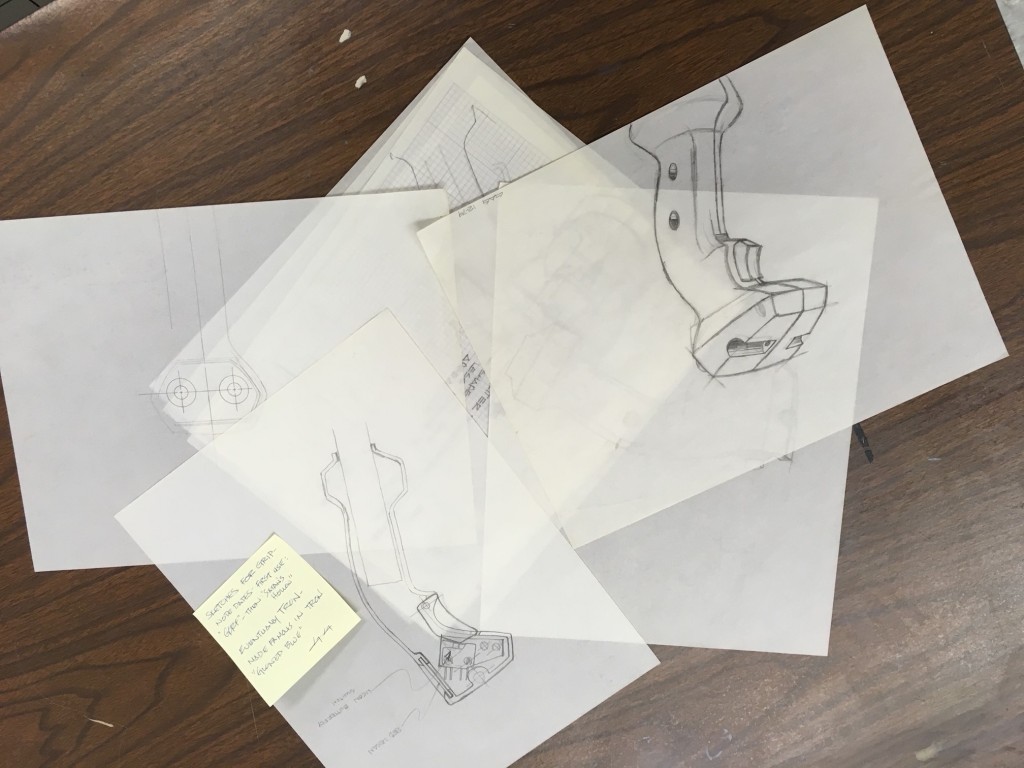
Reblogged this on Indie Gamer Chick and commented:
I had the amazing privilege of interviewing one of THE legends of gaming and pinball, Mr. George Gomez. Be sure to head over to The Pinball Chick to check it out!
[…] Check out the full article here!! […]
Amazing interview! Thanks for bringing this to the world!
This interview was mentioned on Silverball Chronicles episode 14, a podcast under The Pinball Network. Exciting!
[…] The Pinball Chick Interview: George Gomez. Here. […]
[…] The Tron coin-op project was led by George Gomez and Bill Adams at Bally Midway. You can read their original pitch document at The Arcade Blogger, and view some early concept art at The Pinball Chick. […]